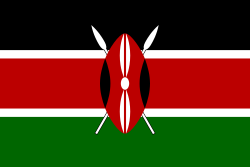Description
The World Bank has maintained its relationship with Kenya and continues to finance development projects. Kenya receives loans from both the IDA and IBRD agencies of the World Bank which are designed to help low and middle income countries. [3] The World Bank has publicly stated its support for the signature "Big 4 Agenda" of President Uhuru Kenyatta, which aims to develop Kenya's manufacturing sector while improving access to healthcare, nutrition, and affordable housing. [4] The World Bank has also stated their support for Kenya's "Vision 2030", which is a development blueprint to turn Kenya into a middle income nation by 2030. [5] [6] The World Bank's country director for Kenya is C. Felipe Jaramillo, he also acts as the country director for Rwanda, Somalia, and Uganda. [7] [8] The World Bank has increased the value of its lending to Kenya in recent years, from $623 million in 2019 to $1.27 billion in 2019. [9]
This page is based on this
Wikipedia article Text is available under the
CC BY-SA 4.0 license; additional terms may apply.
Images, videos and audio are available under their respective licenses.
